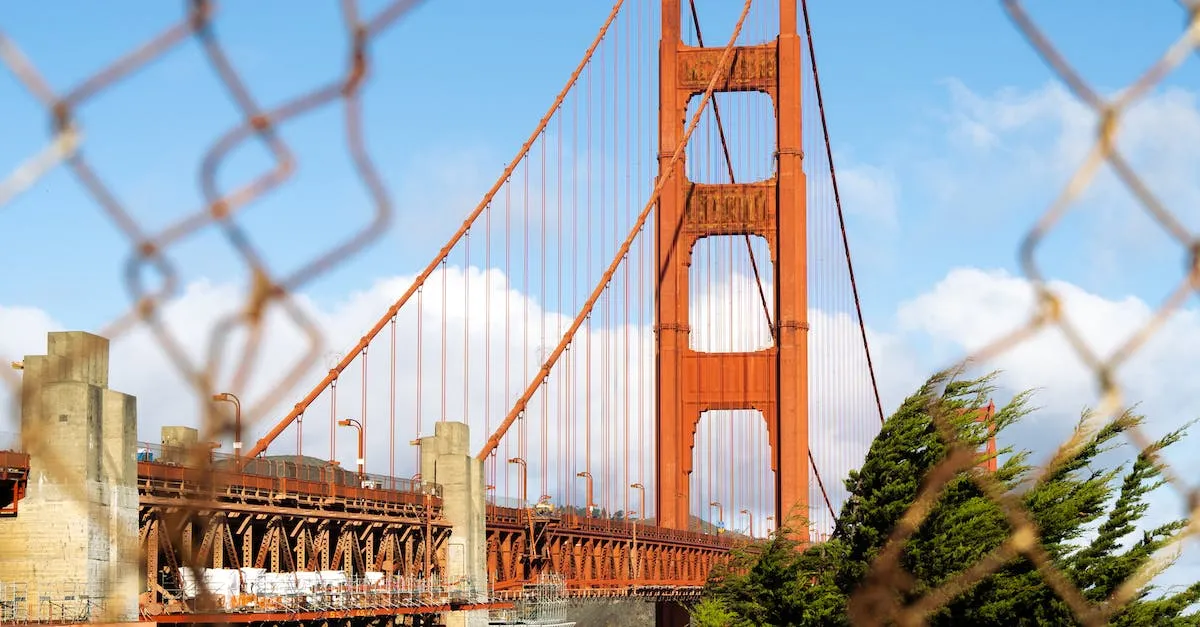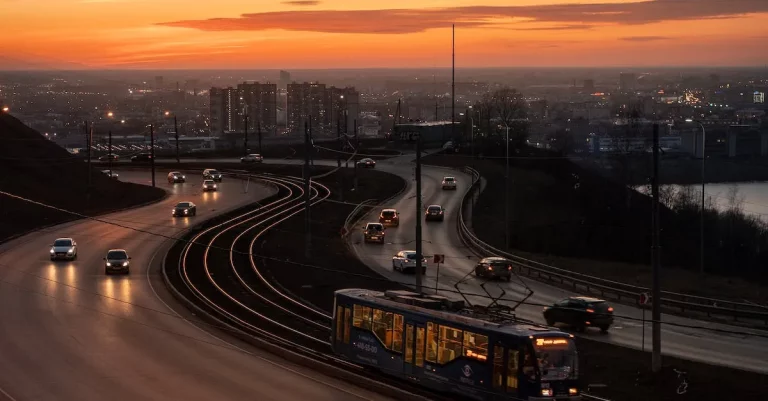Is California The Worst State To Live In?
With its beaches, mountains, cities and ideal climate, California is seen by many as a paradise. But the Golden State also has some significant downsides that lead some to deem it the worst state to live in.
If you’re short on time, here’s the quick answer: California’s high cost of living, taxes, crime, homelessness and other problems make it less desirable for some residents.
Extremely High Cost of Living
One of the major concerns for residents of California is the extremely high cost of living. Everything from housing to food to utilities and transportation comes with a hefty price tag in the Golden State.
The cost of housing, food, utilities, transportation and more is substantially higher in California than most other states.
Let’s start with housing. California’s median home price is approximately $800,000, which is significantly higher compared to the national median of around $300,000. This makes it incredibly challenging for many individuals and families to afford a home in California.
Renting is also not a cheaper alternative, as rental prices are equally high.
Food and groceries in California are also more expensive compared to other states. The higher cost of living in California affects the prices of everyday essentials, making it harder for residents to make ends meet.
Utilities, such as electricity and water, are also expensive in California. The state has some of the highest utility rates in the country, which can put a strain on household budgets. Transportation costs, including gas prices and car insurance, are also higher in California compared to other states.
For example, California’s median home price is about $800,000 compared to ~$300,000 nationally. This makes CA unaffordable for many.
The high cost of living in California makes it unaffordable for many individuals and families. The gap between income and expenses continues to widen, making it increasingly difficult for people to live comfortably in the state.
Many residents are forced to make sacrifices and cut back on essential expenses just to make ends meet.
It’s important to note that the high cost of living in California is driven by various factors, such as the state’s desirable location, limited housing supply, and high demand. These factors contribute to the high prices across different sectors and make California one of the most expensive places to live in the United States.
For more information on the cost of living in California, you can visit the Bureau of Labor Statistics website, which provides detailed data and insights into the economic conditions of the state.
High Tax Rates
When it comes to tax rates, California is often criticized for having some of the highest in the country. Californians face a heavy burden with both state income and sales taxes. According to the Tax Foundation, California ranks among the top states for income tax rates, with the highest bracket reaching 13.3%.
This means that individuals and families in California are paying a significant portion of their income in taxes, reducing their real income.
Californians pay some of the highest state income and sales tax rates in the U.S., reducing real income.
California’s state income tax rates are progressive, meaning that the more you earn, the higher your tax rate. While this progressive system is designed to distribute the tax burden fairly, it does place a heavier burden on high-income earners.
For instance, those in the highest tax bracket pay nearly 10% more in state income taxes compared to the national average. This can have a significant impact on the disposable income and quality of life for Californians.
Additionally, sales tax rates in California are also among the highest in the nation. As of 2021, the statewide sales tax rate is 7.25%, but this can vary depending on the county and city. This means that Californians are paying more for everyday goods and services, further reducing their purchasing power.
Corporate taxes and gas taxes are also among the highest, further driving up prices.
It’s not just individual taxpayers who feel the weight of high tax rates in California. The state also imposes some of the highest corporate tax rates in the country. This can discourage businesses from operating or expanding in the state, which can have a negative impact on job growth and the overall economy.
Furthermore, the gas tax in California is among the highest in the nation. As of 2021, the state gas tax is 51.1 cents per gallon, which is significantly higher than the national average. This drives up the cost of transportation and increases the prices of goods and services throughout the state.
It’s important to note that while high tax rates can be a burden, they also contribute to funding important public services such as education, infrastructure, and healthcare. However, finding a balance between providing necessary services and maintaining an affordable cost of living is a challenge that California continues to face.
For more information on California’s tax rates, you can visit the Tax Foundation website.
Struggling Infrastructure
Outdated and Failing Infrastructure
Despite high taxes, much of California’s infrastructure is outdated and failing. The state’s rapid population growth and lack of sufficient investment in infrastructure have resulted in numerous challenges.
One of the most notorious problems is traffic congestion, particularly in major cities like Los Angeles and San Francisco. The outdated road systems are unable to handle the increasing number of vehicles, causing daily traffic nightmares for residents.
Furthermore, public transit in many areas of California is inadequate. While major cities have some form of public transportation, it often falls short of meeting the needs of the population. Insufficient coverage, limited routes, and unreliable schedules make it difficult for commuters to rely on public transit as a viable option.
As a result, more people are forced to rely on their cars, exacerbating the traffic problems.
Impact on Quality of Life
Power outages, water shortages, crumbling roads, and other infrastructure challenges have a significant impact on the quality of life in California. The state’s aging power grid infrastructure is vulnerable to wildfires and extreme weather events, leading to frequent power outages.
These outages not only disrupt daily life but also pose a threat to public safety.
Water shortages are another major concern. California has been grappling with drought conditions for years, and its water infrastructure is ill-equipped to handle the increasing demand. As a result, residents are often subjected to water restrictions, impacting their ability to carry out daily activities and maintain their gardens or farms.
The state’s roads are also in dire need of repair. Crumbling infrastructure not only causes inconvenience for drivers but also poses a safety risk. Potholes, uneven surfaces, and deteriorating bridges can lead to accidents and costly vehicle repairs.
Homelessness Crisis
California has over 150,000 homeless residents, about a quarter of the national total.
When it comes to the homelessness crisis, California has unfortunately earned a reputation that is hard to shake off. With over 150,000 homeless residents, the state accounts for approximately a quarter of the national total. It is a staggering number that cannot be ignored.
Tent cities can be seen throughout major cities like San Francisco and Los Angeles, serving as a stark reminder of the severity of the problem.
This issue is not exclusive to California, but the state’s high population and costly housing market exacerbate the problem. The lack of affordable housing options, coupled with rising rents, has pushed many individuals and families to the brink of homelessness.
According to a report by the U.S. Department of Housing and Urban Development, California experienced a 16.4% increase in homelessness from 2018 to 2019. This is a concerning trend that highlights the urgent need for effective solutions.
The crisis has grown worse in recent years despite efforts to address it.
Despite continuous efforts to address the homelessness crisis, the situation has unfortunately worsened in recent years. Many initiatives and programs have been implemented to provide housing and support for the homeless population, but the demand continues to outpace the available resources.
It is important to acknowledge that addressing homelessness is a complex issue that requires a multifaceted approach. It goes beyond simply providing shelter for individuals; it involves addressing the underlying causes of homelessness, such as mental illness, substance abuse, and lack of access to affordable healthcare.
While progress has been made in some areas, such as reducing veteran homelessness, there is still much work to be done. California’s homelessness crisis requires a comprehensive strategy that involves collaboration between government agencies, non-profit organizations, and the community at large.
Many Californians view homelessness as a major downside to living in the state. The sight of tent cities and individuals living on the streets can be disheartening, and it affects the overall quality of life for both the homeless population and the general public.
It is crucial for policymakers and community leaders to continue working towards long-term solutions that address the root causes of homelessness and provide sustainable support for those in need.
To learn more about the homelessness crisis in California, you can visit the official website of the U.S. Department of Housing and Urban Development.
Natural Disasters
From wildfires to earthquakes, mudslides and more, California is prone to natural disasters that can devastate communities.
Living in California comes with the undeniable beauty of its landscapes and vibrant cities, but it also means facing the reality of natural disasters. The state is known for its susceptibility to a range of catastrophes, including wildfires, earthquakes, mudslides, and more.
These events can have severe consequences, causing significant damage to communities and leaving a lasting impact on the lives of residents.
California’s diverse geography and climate contribute to its vulnerability to natural disasters. The state’s dry climate and extensive vegetation make it prone to wildfires, which can spread quickly and ravage large areas.
The Santa Ana winds, known for their strong and dry gusts, further exacerbate the fire risk. In recent years, California has witnessed some of the most devastating wildfires in its history, resulting in the loss of lives, destruction of homes, and displacement of thousands of people.
Earthquakes are another natural disaster that Californians must be prepared for. The state sits on the infamous San Andreas Fault, which stretches over 800 miles and is responsible for numerous seismic activities.
While most earthquakes are relatively minor, California has experienced devastating quakes in the past, such as the 1906 San Francisco earthquake and the 1994 Northridge earthquake. These events can cause widespread damage to infrastructure, homes, and pose a risk to human lives.
In addition to wildfires and earthquakes, California is also susceptible to mudslides, particularly in areas with steep slopes and heavy rainfall. The combination of wildfire-prone regions and heavy precipitation can lead to the erosion of soil and the loss of vegetation, making the land more prone to mudslides.
These events can be particularly hazardous, as they can bury homes, block roads, and endanger lives.
Rebuilding and insurance costs add to the already high cost of living. Disasters can also claim lives and destroy homes.
While natural disasters can have a devastating impact on communities, they also come with financial costs that add to the already high cost of living in California. Rebuilding after a disaster can be a lengthy and expensive process, with homeowners and businesses facing the challenge of repairing or rebuilding their properties.
Insurance costs can also rise significantly in disaster-prone areas, making it even more challenging for residents to protect their homes and assets.
Furthermore, natural disasters can claim lives and destroy homes, causing immeasurable emotional and psychological distress to those affected. The loss of loved ones and the trauma of witnessing the destruction of one’s home can have long-lasting effects on individuals and communities.
The recovery process can be arduous, requiring support from government agencies, non-profit organizations, and the community as a whole.
It is important to note that while California faces these challenges, it also has robust emergency response systems in place to mitigate the impact of natural disasters. The state invests in advanced technologies, early warning systems, and evacuation procedures to protect its residents.
Additionally, community resilience and preparedness efforts play a vital role in minimizing the effects of natural disasters and aiding in the recovery process.
For more information on California’s preparedness and response to natural disasters, you can visit the California Governor’s Office of Emergency Services website.
Conclusion
While many still consider California a paradise, its extremely high costs, taxes, infrastructure challenges, homelessness crisis and susceptibility to disasters cause some to see it as the worst state to live.
These factors make life difficult for a portion of California residents, though others feel the benefits outweigh the downsides.








